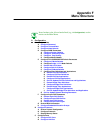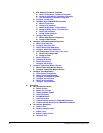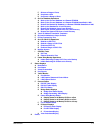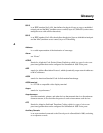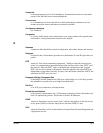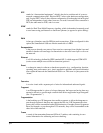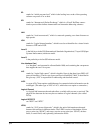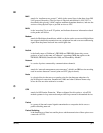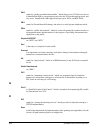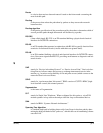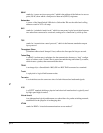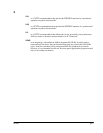
glo-4 SmartSwitch 1800 4.0 User Guide, Rev 01
DTE
stands for “data terminal equipment,” which is the device at either end of a user-to-
network communications path. “Physical DTE” refers to the hardware configuration,
and “Logical DTE” refers to the software configuration. Note that physical and logical
DTE are independent of each other; however, for each, if one end of the connection is
DCE, the other must be DTE, and vice versa.
DTMF
stands for Dual Tone Multi Frequency signaling, which is the method commonly used
to send tones using push buttons on touch tone phones (as opposed to pulse dialing).
E
E&M
is the type of interface used for PBX tie-trunk connections. When configured for this
option, the SmartSwitch 1800 acts like the trunk side of a PBX.
Encapsulation
is the process whereby one protocol layer receives a message from a higher layer and
attached a header to the message for transmission to the next lower layer or out over
the network.
Ethernet
is a LAN technology defined by IEEE standard 802.3, which supports CSMA/CD
(carrier sense multiple access/collision detection) protocol.
Event
is a change in status in software or hardware operation (e.g., configuration, function,
operating state, performance, etc.), that is reported to automatic and specified destina-
tions within the network the SmartSwitch 1800 is on. This term is synonymous with
“alarm.”
F
Four-wire
is a voice circuit with a separate pair of wires for inbound and outbound signals.
Fragment
is an IP datagram that is a piece of a larger datagram, the larger one having been seg-
mented to allow it to pass through a network that did not support the larger datagram.
(See “Fragmentation.”)
Fragmentation
is the breaking up of IP datagrams into smaller segments, to allow the datagrams to
pass through a network that does not support the full size. If IP fragments the data-
grams, they will be reassembled at the final destination; if another protocol fragments
them (for example, to pass through an X.25 network), they will be reassembled at the
other side of that network.
Frame
is a unit of data transmitted between OSI level 2 entities, and containing its own
control information for addressing and error checking.




